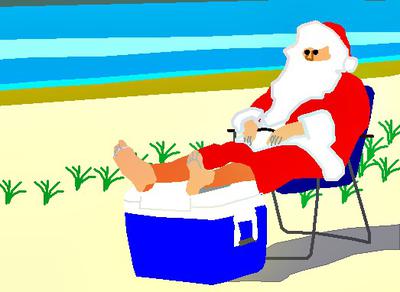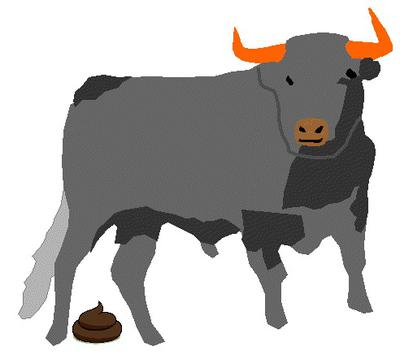Math can be useful in determining truth vs perception
by Ann
(Indiana)
Math can be very useful when trying to make a decision that involves money, or time and distance, or building, or many other things. We can "feel" or "intuit" many mathematical answers. Sometimes our "intuitive" math is far more efficient that actual calculations -- for instance, we can easily catch a ball, but the math we must use to describe its predicted path is differential calculus (which very few of us learn).
Sometimes our instinctive impressions can lead us astray, however. When dealing with complex systems that we have little direct, and repeatedly tested, experience with (such as playing catch), mathematics will be far more reliable. With weather systems, it is unlikely that we have any direct experience with conditions in the upper atmosphere with which to "feel" our answers.
While this page can be helpful to a layman attempting to understand how meteorologists use temperature conversions, it still refers to areas of knowledge a layman has not yet obtained. The links provided might lead to a deeper understanding, but at first glance it is mostly confusing and seems to contain inconsistencies.
For instance, the part, "We choose one proportional to the Atmosphere layer thickness..." caused me to immediately ask, "Choose "one" what? Choose a system of conversion, choose an atmospheric layer, choose a specific temperature?"
The chart further down the page seems to me to show data different than the explanation claims. It says, "we determine that the average temperature between 550 millibars and 650 mbar (3774 metres above sea level and 5076m) was about -5 degrees Celsius...." but when I look at the two triangular areas on the chart (which have top and bottom margins at the 550 and 650 mb lines) and follow the other chart lines to the Celsius scale at the bottom, I find answers other than -5 degrees. If I go straight down, I find about 15 degrees; if I follow the red line, I find about 2 degrees; if I follow the curved yellow lines, I find a range around 40 degrees. So, I do not understand at all how to use that chart correctly.
Also, your explanation of Fahrenheit/Celsius conversion is not the way I learned it, so I had to check the math before I could accept it as working. I learned C*9/5+32 and (F-32)*5/9 - since 40*9/5-40=32, it works out, and maybe your method is less prone to error as both conversions involve adding before multiplying and dividing, so maybe those using it are less likely to forget their parenthesis, but the method I learned makes more "intuitive" sense to me.
Barry's Response - You have inspired me to make some changes, Ann. I hope it reads a little better now.
Search this site for more information now.
Imagine this scenario...
Dimly lit, book-lined study with leather-bound volumes and antique furniture. In high-backed chairs, Jordan Peterson and Carl Jung talk passionately about intuition and math.
Jordan Peterson: (Leaning forward) Dr. Jung, I've always been fascinated by how intuition helps us understand complex systems. Math isn't just formulas and equations. There's a deeper layer to it.
Carl Jung: (Nodding) Yeah, Jordan. Even though mathematics is often seen as a purely rational discipline, it's really rooted in intuition. It's a language we've developed to explore the universe's hidden structures.
Peterson: (Eagerly) Yes, these mathematicians seem to dance with numbers, making intuitive leaps that lead to breakthrough discoveries. It didn't just come from logical steps, but from a profound intuition about the nature of space and time, just like Einstein's theory of relativity.
Jung: (Smiling) Yeah, you're right. The role of imagination, which is closely related to intuition, was often talked about by Einstein. It's like a journey into the unknown, guided by a gut feeling that there's more to discover.
Peterson: (Thoughtful) But how does this intuition, this almost mystical aspect of mathematics, connect to the archetypal structures you've studied? Is there a universal symbol at work?
Jung: (Deep in thought) You make a good point, Jordan. Mathematics or any other field, intuition comes from the collective unconscious. We're linked to the archetypal world through symbols and images. Mathematicians stumble upon elegant solutions like they're tapping into ancient wisdom.
Peterson: (Engaged) They're delving into the timeless, the fundamental patterns that govern reality. It's almost like Plato's ideal forms.
Jung: (Nodding) Yeah, exactly. Math is like our conscious minds talking to our collective unconscious, grasping the eternal truths of existence through mathematics.
Peterson: (Pausing) I can't help but wonder, Carl, if our intuition and mathematical insights are a way of finding a grander story that transcends time and space.
Jung: (With a spark in his eye) Jordan, you're right on. Mathematics, with its intuitive underpinnings, is one of the languages we use to decipher hidden chapters of our story.
Peterson: (In awe) It's a story science and myth are trying to figure out. Maybe figuring out the most profound mysteries of our existence lies in intuition, mathematics, and archetypal understanding.
Jung: That's right, Jordan. The greatest revelations might come from the meeting of rationality and intuition, mathematics and myth.
As the dimly lit study envelops them in profound ideas and possibilities, the two thinkers continue their discussion about intuition, math, and the collective unconscious.
Join in and write your own page! It's easy to do. How? Simply click here to return to Math rules!.
Do you have concerns about air pollution in your area??
Perhaps modelling air pollution will provide the answers to your question.
That is what I do on a full-time basis. Find out if it is necessary for your project.
Have your Say...
on the StuffintheAir facebook page
Other topics listed in these guides:
The Stuff-in-the-Air Site Map
And,
Thank you to my research and writing assistants, ChatGPT and WordTune, as well as Wombo and others for the images.
GPT-4, OpenAI's large-scale language generation model (and others provided by Google and Meta), helped generate this text. As soon as draft language is generated, the author reviews, edits, and revises it to their own liking and is responsible for the content.




